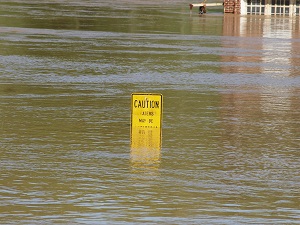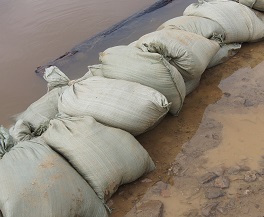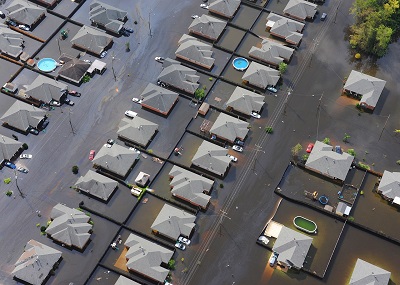Standing Water? Standing IN Water? Call now.
If your building is flooded, stop reading and call us!
If you’ve had previous damage from water and it’s less of an emergency, you can call us or contact us by email.
Standing Water? Standing IN Water? Call now.
If your building is flooded, stop reading and call us!
If you’ve had previous damage from water and it’s less of an emergency, you can call us or contact us by email.



THE ULTIMATE FLOOD SURVIVAL GUIDE
THERE'S NO SUCH THING AS BEING OVERLY PREPARED FOR WISCONSIN WEATHER
Storms can’t be avoided; they are powerful forces of nature capable of leaving behind a lot of damage. Dangerously unpredictable, thunderstorms bring torrential downpours, cause serious damage, and can even take lives.
At ERS, we believe in educating our customers and giving them the facts about preventing and preparing for disaster. Though our flood damage restoration specialists work with the aftermath, minimizing the threat before it happens prevents further devastation.
Creating a plan before a flood is your best option. With the proper knowledge and preparation, you and your family will survive the greatest of flooding threats. Read on to find out more!

A History of Wisconsin Flood Weather
Though Wisconsin doesn’t have mountainous valleys or steep hills, it has a rich history of extreme flooding. Surface run-off and lake/river overflow are the two bigger threats; destroying homes, businesses, and agricultural properties.
In summer, heavy rain can lead to flash floods. Wisconsin winters can cause flooding as snow and ice thaws. If the ground is frozen, the water cannot be absorbed and leads to flooding. This deadly combination urges Wisconsinites to prepare for future downpours, and it all starts with our Ultimate Flood Survival Guide.
BEFORE THE FLOOD
1. Know the Flood Danger Zones
Flood zones are the areas designated by the Federal Emergency Management Agency (FEMA) as at risk for flooding. These locations are labeled according to threat level: low, average, or dangerous. No matter where you live in Wisconsin, you are in a flood zone. It’s just a matter of severity.
The U.S. Geological Survey are the brains behind the WaterWatch map; a real-time, interactive map displaying flood-level locations throughout the country. Knowing where your home lies within flooding areas is crucial in forming an emergency plan. Check out Wisconsin’s flood zone locations.
2. Have a Plan Ready for Action
Creating a plan will make those sudden flood emergencies less threatening. Whether you ride out the storm or completely evacuate, we’ve got you covered with factors to include in your flood safety plan. Consider the following survival advice:
- Plan out transportation
- Gather important documents
- Prepare a flood supply kit
- Contact friends & family in safe area to stay with
- Locate the nearest local flood shelter
Putting in the extra work of planning will save you time and precious lives. You can never be too prepared for a natural disaster.
3. Create an Emergency Supply Kit
Having a separate emergency pack for flood situations is essential for survival. Though you can’t take your entire home with you, having the important items makes your crisis a little less-stressful. Take the time to put together a kit before it’s too late. Use a water-proof container and select a bright color to make your kit easily recoverable.
Gather the following items for your very own emergency kit:
- Bottled water
- Non-perishable food
- Basic hygiene products
- Medications
- Battery-powered radio or cell phone with battery charger
- Flashlight
- All-purpose knife/tool
- Fire-starter
- Cash
- First Aid kit
- Copies of important documents
- Blanket, towels, or extra clothes
- Floatation device

Feel free to add more items on the list based on your family. If you have young children, you may want to include diapers or games to keep them occupied. These items are the basics everyone should have in their emergency supply kit. Make sure the kit isn’t too heavy to quickly transport and carry. The main goal here is to be prepared for the unexpected.
4. Prepare Your Family
Your family’s safety is extremely important in the event of a flood emergency. With turbulent waters surrounding your home, evacuating and staying somewhere safe is the difference between life and death.
Before evacuating, plan ahead and gather what your family needs for at least 3 days. Seniors, children, and pets require extra attention when packing for them. Check out the following items needed for certain family members:
Seniors
- Medications & dosage information
- Personal items (oxygen, hearing aids, eyeglasses)
- Medical insurance documents
Check out a detailed list of flood survival essentials for seniors and other care tips.
Children
- Medications & dosage information
- Personal items (inhaler, EpiPen)
- Books, toys, & games (non-electrical)
Go over your safety plan with your kids to help them stay calm during an evacuation. Be prepared with an extensive checklist of flood emergency essentials for kids and other children’s flood safety tips.
Pets
- ID tags on collar & leash
- Vet records & medications
- Food, water, & portable bowls
- Sturdy carrier
- Pet bed, blanket, & toys
- Litter box (cats only)
It’s not uncommon for pets to try to run away to higher ground on their own when bad weather occurs. Take a current photo of your pet with you in the event you become separated. NEVER leave a pet chained up or in a cage during a flood. Find out more flood emergency safety tips for pets.
WHEN THE FLOODING STARTS
1. Stay Informed with WI Radio Weather Alerts
As weather alerts and warnings pour in, keeping up-to-date with the latest news will determine your next course of action. The National Oceanic and Atmospheric Administration’s (NOAA) National Weather Service constantly provides weather patterns, changes, and alerts; all for the benefit of a ‘weather-ready’ nation.
Check out the extensive list of Wisconsin cities for radio weather alerts. Include the list of radio channels in your survival kit, along with a battery-powered radio and extra batteries. Receiving instant weather updates keeps you and your family safe in the worst of natural disasters.
If there’s a chance you will be evacuated, this is the time to get extra gas and fill up your vehicle. You don’t want to be stuck in the rain because of an empty gas tank.
2. Prepare Your Home
If you are forced to evacuate your home and still have some time, take a few steps to minimize damage to your home and belongings. If the floodwaters are approaching quickly, do NOT try to save your possessions. Focus on getting your family out first.
Shut off all electronics and unplug all cords. Depending on the severity of the situation, emergency services may recommend you turn off all electricity, water, and gas before leaving. To protect your belongings, move them to the highest floor in your house and move outdoor furniture inside. Paint cans and oil containers should be moved to upper floors as well to prevent them getting into the water.
Take photos of your home and vehicles, along with any expensive or valuable items. These can be used for insurance purposes after the flood is over.

Once you’re ready to leave, place a note or message with contact information so rescue workers know your home has been evacuated.
3. Evacuate to Higher Ground
Head to the nearest high ground or evacuation point for your area as soon as possible. The longer you wait, the more difficult driving will be. If there is not a designated gathering point, listen to radio reports or emergency stations for instructions.
- Do NOT attempt to drive through flowing water
- Do NOT walk through water more than 6 inches deep
- Do NOT drink or bathe in the water
While it may seem safe to wade through low water, it only takes a small amount of running flood water to knock you off your feet or disable your vehicle. If the water is deep but still, there may be unseen debris under the surface which can cause injury. Proceed with caution and avoid flowing water.
4. Wisconsin’s Emergency Restoration Specialists for Flood Damage Cleanup
After a devastating flood evacuation, coming back to a ruined home is awful. Surviving families are faced with the overwhelming task of damage repair. Who do you turn to?
Our flood remediation experts at ERS turn back the clock and restore your home back to its original beauty. Within 60 minutes of your call, we are already there rolling up our sleeves to tackle your water removal and damage repair. We do it all, from furniture cleanup to hardwood floor drying. We also provide mold mitigation, removing dangerous mold which thrives after floods from your home to keep your family healthy.
Picking up and putting back the pieces of your life is difficult enough; let ERS take it from here.



